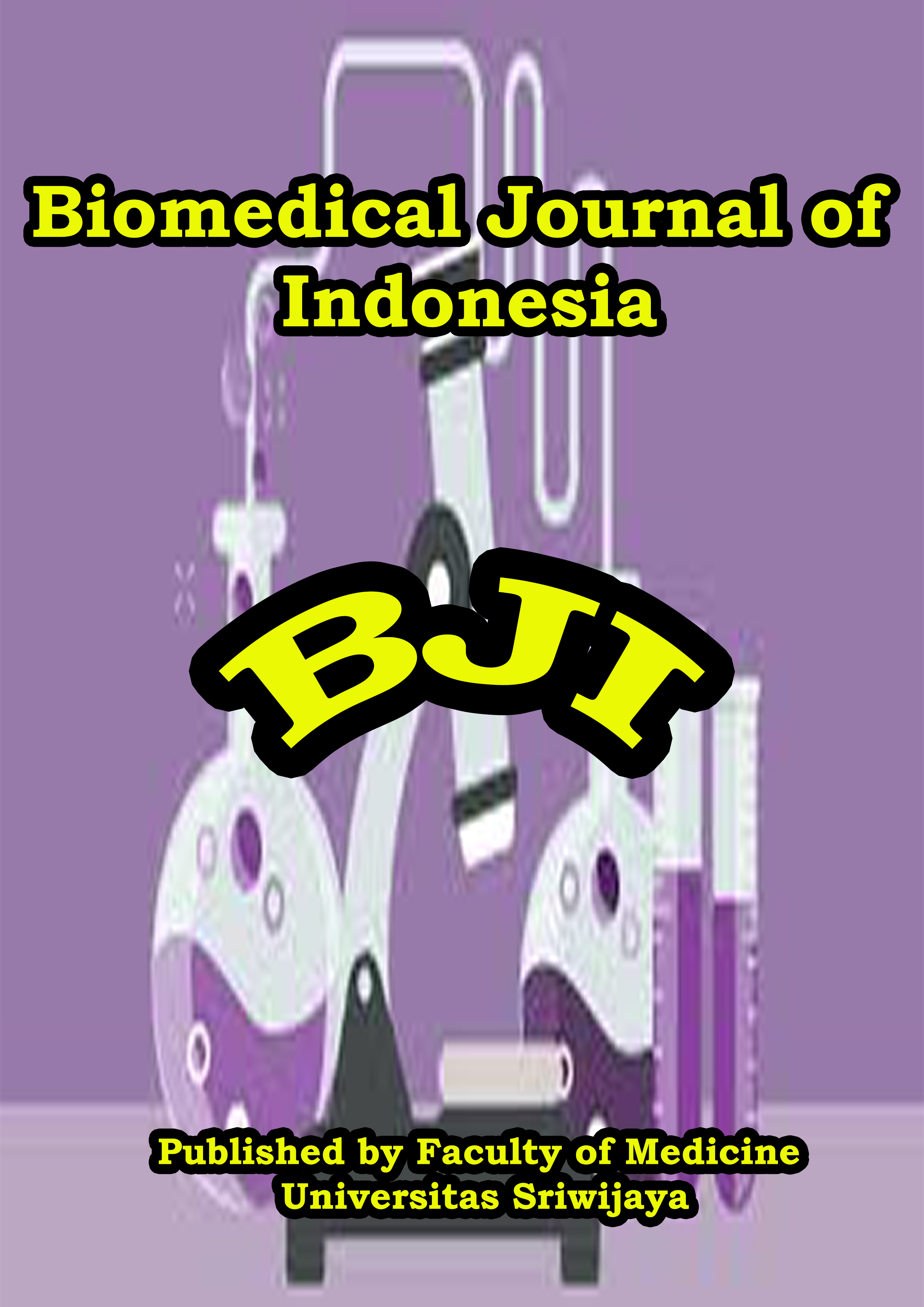Comparison of Oropharyngeal Microbial Pattern Based on Nasogastric Tube (NGT) Use in Dr. Mohammad Hoesin Hospital
Main Article Content
Introduction. A Nasogastric Tube (NGT) is a flexible tube inserted into the stomach through the nose (nares) to preserve nutritional support. The use of NGT is claimed to increase the risk of pathogenic bacteria colonization due to stagnation, ultimately worsening the patient's outcome. Proper identification of bacterial patterns is required as colonization grows to avoid further complications. This study aims to compare oropharyngeal microorganism patterns in patients with NGT to those without NGT at Dr. Mohammad Hoesin Palembang.
Methods. A cross-sectional observational study was used. From September 2022 to October 2022, data were collected using primary data from interviews (research questionnaires) and oropharyngeal swab results (bacterial culture) in 42 patients undergoing treatment at Dr. RSUP. Mohammad Hoesin Palembang's ENT department.
Results. Positive colonization was found in all patients with NGT (100%) and 90.47% in the group without NGT. P. aeruginosa was the most common pathogen in the NGT group (47.62%). The use of NGT, body weight, height, and body mass index were significant risk factors in the incidence of P. aeruginosa colonization (p=0,012).
Conclusion. There is a significant difference in P. aeruginosa colonization between NGT and non-NGT users. NGT use is the most important driving factors of colonization development. However, these findings were not found in colonization in general or specific bacteria categories.

